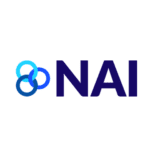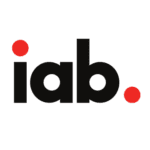From personalized marketing campaigns to product recommendations, data provides insights that can transform the way businesses interact with consumers. However, with increasing concerns about privacy and misuse of personal information, (check out this excellent breakdown of the problem by the ITIF!) the way we collect and use data is under scrutiny – and that means the task up to each marketer gets a little more difficult – to prove opt-in consent, an ethical and transparent approach to data collection. Let’s dive in to understand what opt-in data is and why it’s vital for businesses today.
What is Opt-In Data?
Opt-in data refers to the information that users voluntarily provide, typically by giving explicit permission or ‘opting-in’. This could be as simple as ticking a checkbox to receive newsletters or filling out a detailed form to access premium content.
In essence, opt-in data collection prioritizes user consent, ensuring that the data gathered is with the full knowledge and agreement of the user.
Why is Opt-In Data Important When a Marketer Needs to Prove Opt-In Consent?
- Trust and Transparency: When users willingly provide their data, it establishes a foundation of trust. They are aware of what they’re signing up for and can expect a certain level of communication or engagement from the business. This transparency strengthens the brand-consumer relationship.
- Higher Quality Data: Opt-in data is often more accurate and valuable. Since users voluntarily provide their information, there’s a higher likelihood that they’re genuinely interested in your product, service, or content. This leads to more meaningful and actionable insights.
- Regulatory Compliance: With regulations like the General Data Protection Regulation (GDPR) and the California Consumer Privacy Act (CCPA), businesses are now obligated to prioritize user consent in their data collection processes. Opt-in practices ensure that companies remain compliant and avoid hefty fines.
- Reduced Spam Complaints: By using opt-in data for email campaigns or promotions, businesses can significantly reduce the number of spam complaints. After all, users have given their explicit permission to be contacted.
Best Practices for Collecting Opt-In Data
- Clear Communication: Always specify why you’re collecting data and how it will be used. Avoid jargon or lengthy terms and conditions. The clearer and more concise your messaging, the better.
- Double Opt-In: Consider implementing a double opt-in process. This means once users provide their data, they receive a confirmation email to verify their intent. This ensures that the user is genuinely interested and reduces the chances of spam or misuse.
- Easy Opt-Out: Just as users should easily opt-in, they should have a clear and straightforward way to opt-out or withdraw their consent.
- Regularly Update Consent: Interests and preferences change. Regularly ask your users to update their preferences or confirm their interest in staying on your list.
How Can Marketers Prove Opt-In Consent?
For transparency and legality, marketers must be able to demonstrate where and when they received a particular user’s opt-in consent.
A few key components provide evidence:
- Domain: The website or platform where the user gave their consent.
- IP Address: This provides an indication of the user’s location at the time of opting in.
- Timestamp: A critical piece of data, the timestamp shows precisely when the user gave their consent.
Where Do Opt-In Data Come From?
Several platforms and websites gather and share opt-in data. Some of these include:
- E-commerce websites where users might sign up for newsletters and updates.
- Blogging platforms where readers opt in to receive the latest posts or news.
- Online forums or community platforms where participants wish to be updated on specific topics.
- Software or service platforms where users might sign up for tutorials, webinars, or updates.
The Business of Opt-In Data and Why to Prove Opt-In Consent
There’s an emerging market where opt-in data can be sold or shared with interested parties. Often, businesses share this data with upstream providers as a way to generate extra revenue. However, it’s essential to note that when you procure such data, you may find a plethora of URLs where the consent originated. Doing your due diligence is critical to ensure you’re only contacting genuinely interested parties.
The Fine Print: Data Sharing and Terms of Service
Now, you might wonder: “Is it really legal to share opt-in data?” The answer lies in the website’s Terms of Service (TOS). When a user signs up on a site, they’re often (knowingly or unknowingly) agreeing to the site’s TOS. These terms often contain clauses about data sharing, usage, and storage. So, before using any opt-in data, it’s always wise to review the originating website’s TOS.
The Power of Opt-In Data: Why Knowing Ahead of Time Matters
The way we collect, store, and use information has come under scrutiny, leading to an increased focus on the value of opt-in data. When users actively give consent to share their information, it’s known as ‘opt-in data’. Knowing the nature of this data ahead of time offers a plethora of advantages. Let’s explore a few of them.
Trust and Transparency
Opt-in data is all about transparency. When you know users have willingly shared their details, it creates a foundation of trust. This trust is a two-way street – consumers trust businesses with their data, and in turn, businesses respect that trust by safeguarding the data and using it ethically.
Improved Data Quality
People who actively opt-in are generally more engaged and interested in what you have to offer. This means the data you receive is often more accurate and relevant, leading to better insights and more meaningful interactions.
Better Engagement Rates
Users who have opted in are more likely to be receptive to your messages. Whether it’s email marketing, newsletters, or promotional offers, you’ll likely see higher open rates, click-through rates, and conversion rates from an audience that has chosen to hear from you.
Regulatory Compliance
With data privacy laws such as GDPR and CCPA becoming increasingly stringent, knowing that you’re dealing with opt-in data ensures that you’re on the right side of these regulations. Non-compliance can lead to hefty fines and reputational damage, making it essential to be sure of the nature of your data.
Enhanced Customer Loyalty
When users choose to share their data, it signifies a certain level of interest and loyalty towards your brand. Respecting this by using opt-in data judiciously can further enhance this loyalty, leading to long-term customer relationships.
Reduction in Data Noise
Opt-in data reduces the noise that often comes with broad datasets. By focusing on a specific group of individuals who have shown interest, you can streamline your analysis and glean more pertinent insights.
Cost Efficiency
While it might seem counterintuitive, focusing on opt-in data can be more cost-efficient in the long run. Instead of casting a wide net and hoping for the best, targeting opted-in users can lead to higher ROI due to better engagement and conversions.
Opt-Ins Don’t Have to be Scary
Transparency, and ethical practices are always going to be key. Knowing in advance that you’re harnessing opt-in data has transitioned from being a mere advantage to an imperative. The benefits of this approach resonate loud and clear: enhanced engagement, fortified trust, and a deeper, more genuine connection with your audience. The caliber of your data is paramount, and opt-in data unmistakably emerges as the gold benchmark.
When utilized aptly, opt-in marketing becomes an invaluable asset for businesses aiming to engage a defined audience. This method champions transparency, user autonomy, and precise marketing avenues. However, its power and legitimacy hinge on its application. It’s essential to embark on opt-in marketing with comprehensive research, an unwavering commitment to users’ preferences, and a vigilant regard for data protection regulations. In the unfolding narrative of digital privacy, opting-in isn’t merely an exemplary method—it encapsulates the ethos of future-oriented, ethical data collection.




